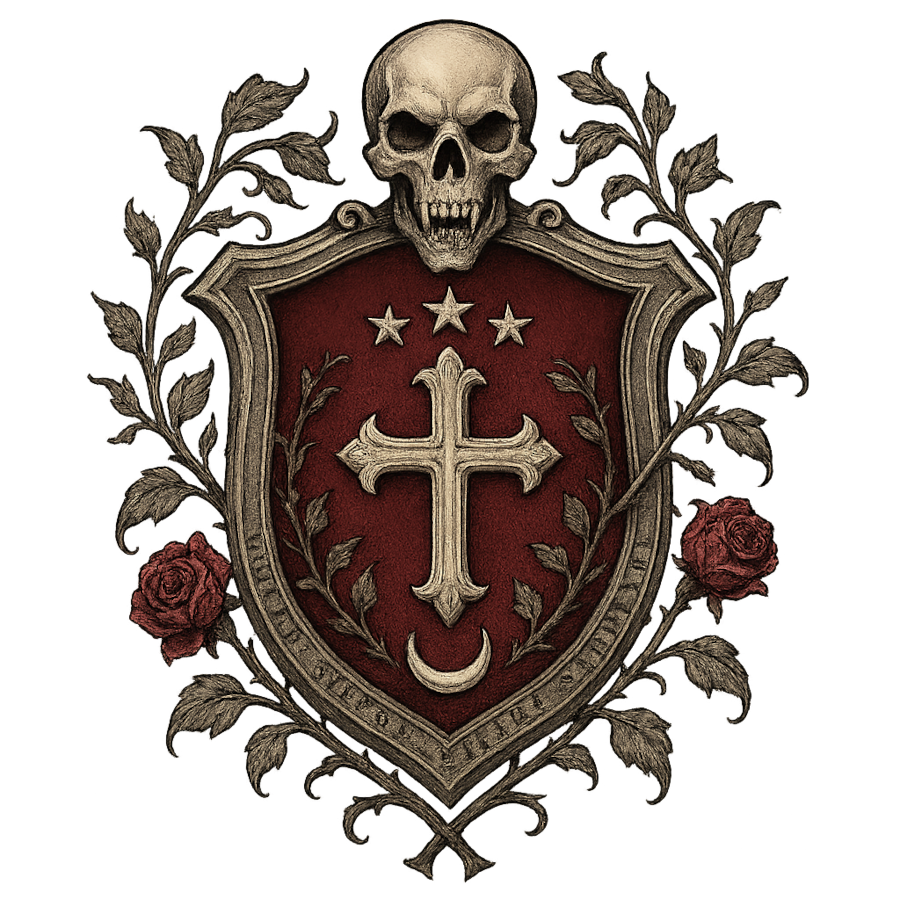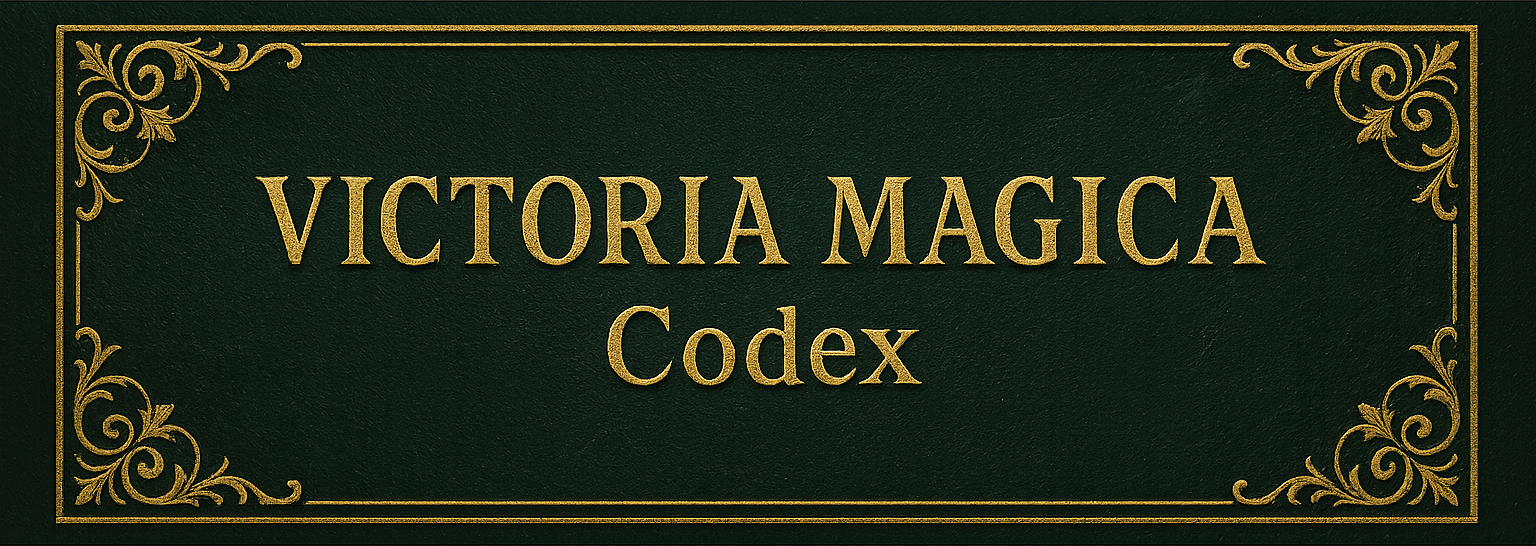Zorya Nocturne
⚠️ Content Warning
This article may contain mature themes, including homoerotic content, complex power dynamics, sexual encounters with vampires and anthropomorphic beings, as well as other adult material.
Reader discretion is advised.
TABLE OF CONENTS is in the World Navigation
Zorya Nocturne is a knightly order dedicated to preserving the Natural Order between humankind and the undead. Operating openly — though seldom flamboyantly — the order investigates, regulates, and eliminates supernatural threats such as ghouls and rogue vampires across Stranovia and beyond. Part state-funded, part self-governing, Zorya walks the fine line between public service and occult vigilance, blending diplomacy, deadly efficiency, and moral complexity.
Structure
The Zorya Nocturne follows a dual-path hierarchy that reflects the Order's split between field operatives (hunters) and administrative personnel (secretaries). Both tracks begin with the same foundational training, but diverge in purpose as members progress. The structure is hierarchical but adaptable, allowing for specialization without rigid castes.
Adepts
Initiates of the Order. Adepts receive a general education in combat, occult knowledge, medical basics, diplomacy, and bureaucratic practice. Toward the end of their training, a decision is made—based on skill, interest, and temperament—whether they are assigned to the Hunter or Secretary track.
Journeymen
Intermediate rank.
Journeymen receive specialized training depending on their path:
- Hunter Journeymen: Learn tactics, monster lore, weapons mastery, field medicine, and survival.
- Secretary Journeymen: Focus on record-keeping, diplomacy, forensics, alchemy, logistics, and occult theory.
Journeymen often mentor Adepts and assist higher-ranking members. They are not yet considered fully autonomous.
Hunter / Secretary
Full members of the Zorya.
- Hunters: Licensed vampire hunters and field agents. At this stage, they may choose to undergo vampiric transformation (a decision made with great care and ceremony). Approximately 30% do. These Crimson Hunters often take on dangerous solo missions or act as supernatural specialists.
- Secretaries: Senior administrative officers who oversee mission planning, intelligence analysis, budgeting, diplomacy, and internal logistics. They are the organizational backbone of the Zorya.
Master Hunter / Magister
Leadership tier.
- Master Hunters: Command authority over field units, act as field instructors, internal inspectors, and mission strategists.
- Magisters: High-ranking administrators responsible for training centers, foreign relations, archives, magical research, and law enforcement within the Order.
Both titles carry equal weight and are distinguished by their function.
Arch Hunter / Registrate
Executive leadership. Each of the three Mouths of Zorya is overseen by a duo:
- One Arch Hunter (field-oriented)
- One Registrate (administrative-oriented)
They form the core council responsible for policy, funding, intergovernmental coordination, and high-level strategy.
Mouths of Zorya
A semi-mystical triad of ancient oracles. They are said to receive visions, read signs, and offer spiritual and strategic guidance to the leadership. Though technically without direct command authority, their word carries near-sacred weight within the Order.
Special Modifiers
Members may receive functional designations based on their duties:
- Journeyman Instructor
- Secretary Diplomat
- Magister Archivist
- Hunter Interrogator
These additions do not change rank but clarify a member’s expertise.
Culture
The culture of Zorya Nocturne is defined by pragmatism, loyalty, and a fierce commitment to balance. Rituals and formalities are kept to a minimum—respect is shown through deeds, not ceremony. The few existing rites include graduation ceremonies, promotions, and the rare but solemn event of a member’s Wandlung (transformation into a vampire).
The core ethos is simple: "Trust your brother."
Each member is expected to support and protect their fellow hunters or secretaries, regardless of rank or origin. Trust, once broken, is difficult to restore.
Zorya members see ghouls as a grave threat—not only to humanity, but to the very balance between life and undeath. Their destruction is not only sanctioned, but encouraged.
Equally dangerous are vampires who propagate the Dark Kiss without reason or restraint. Those who sire indiscriminately endanger both humans and the vampire condition. Zorya believes that such vampires must be punished—not their offspring. This principle forms the basis for the Order’s occasional role as protector of Reluctant Born or Strays.
Furthermore, any vampire who feeds regularly or maliciously from mortals without consent or caution is seen as a disruptor of the natural order. Such actions are not just discouraged—they are hunted.
Despite the Order’s intimate relationship with vampirism, Zorya holds balance above all. Vampires can be allies, tools, or even members—but never predators.
Public Agenda
Zorya Nocturne operates under a clear and unwavering mandate:
"To eliminate all threats posed by ghouls and irresponsible vampires—to humanity, to the natural order, and to vampirism itself."
Their mission is not one of blind eradication, but of precise intervention. Ghouls are seen as abominations: feral, corrupted remnants of vampiric failure. Vampires who spread the Dark Kiss without care or restraint are viewed as equally dangerous—not only to humans, but to the fragile coexistence between species.
Zorya does not seek to control vampire society, nor to dictate mortal policy. It seeks balance. Where that balance is endangered—by predation, neglect, or madness—they act.
Publicly, Zorya is regarded as a necessary safeguard against supernatural excess, even by those who whisper uneasily about its methods. Within vampire circles, its presence is both a warning… and a promise.
Assets
Zorya Nocturne's wealth and resources are as formidable as they are theatrical.
At the heart of its operations stands Castle Olteanu, an absurdly vast fortress nestled high in the mountains surrounding Karvostra, the capital of Stranovia. Serving as the organisation’s headquarters, the castle houses training facilities, administrative offices, a grand library, laboratories, and the infamous Vaults — home to the world’s largest collection of vampire-slaying weaponry, including a legendary cache of Damascus steel arms.
Zorya also maintains a network of safehouses throughout various European nations. These range from discreet rural cottages to fortified manors and ancient keeps. Each serves a strategic function: field offices, secure recovery sites, hidden archives, or emergency shelters for hunters and affiliated vampires.
Though Zorya does not command a formal army, it possesses an extensive array of assets: traditional and modern weaponry, blessed gear, alchemical stockpiles, encrypted communication systems, and specially modified transport vehicles. These are funded jointly by the Stranovian government and by host nations, which contribute to the wages and bounties of stationed hunters.
In all, Zorya's assets reflect its dual nature — part martial order, part shadow bureaucracy — ever-ready to confront that which lurks in the dark.
History
The precise founding date of Zorya Nocturne remains unknown — fittingly so, for an organisation that walks between dusk and reason. The oldest surviving document, archived in the depths of Castle Olteanu, is dated 1536 and refers to a successful operation against a rogue vampire coven near the Stranovian border. Even then, the structure of Zorya appears well-established, referencing both training ranks and the enigmatic Three Mouths of Zorya, suggesting the order's internal framework predates the document by at least several decades.
Throughout the 16th and 17th centuries, Zorya operated with deliberate discretion, not because of secrecy — after all, vampires cannot easily hide their nature due to their distinctive albinism — but because its mission often placed it in uncomfortable proximity to power: noble patrons, church interests, and foreign courts. It became known as a necessary but unnerving presence, a hybrid of military precision and arcane scholarship.
By the 18th century, the organisation began formalising its education system, establishing permanent training academies, and differentiating its internal branches more clearly. The role of Journeymen, the Secretary path, and the Magisterium were all institutionalised during this time, alongside new diplomatic protocols for cooperation with friendly vampire factions.
In the 19th century, particularly following the rise of urban centres and the legal recognition of "registered vampires" in Stranovia, Zorya Nocturne was partially incorporated into the state apparatus, receiving governmental funding and legal authority within its jurisdiction. Safehouses were established across Europe, and its strategic archive of vampire-slaying weaponry — most notably its vast collection of Damascene blades — was expanded and centralised within Castle Olteanu.
Today, Zorya Nocturne functions as a transnational, civilian-knightly order. It is both feared and respected — a guardian of balance rather than of life or death, sworn to preserve the Natural Order from the corrupting hunger of ghouls and ungoverned vampirism.




Comments